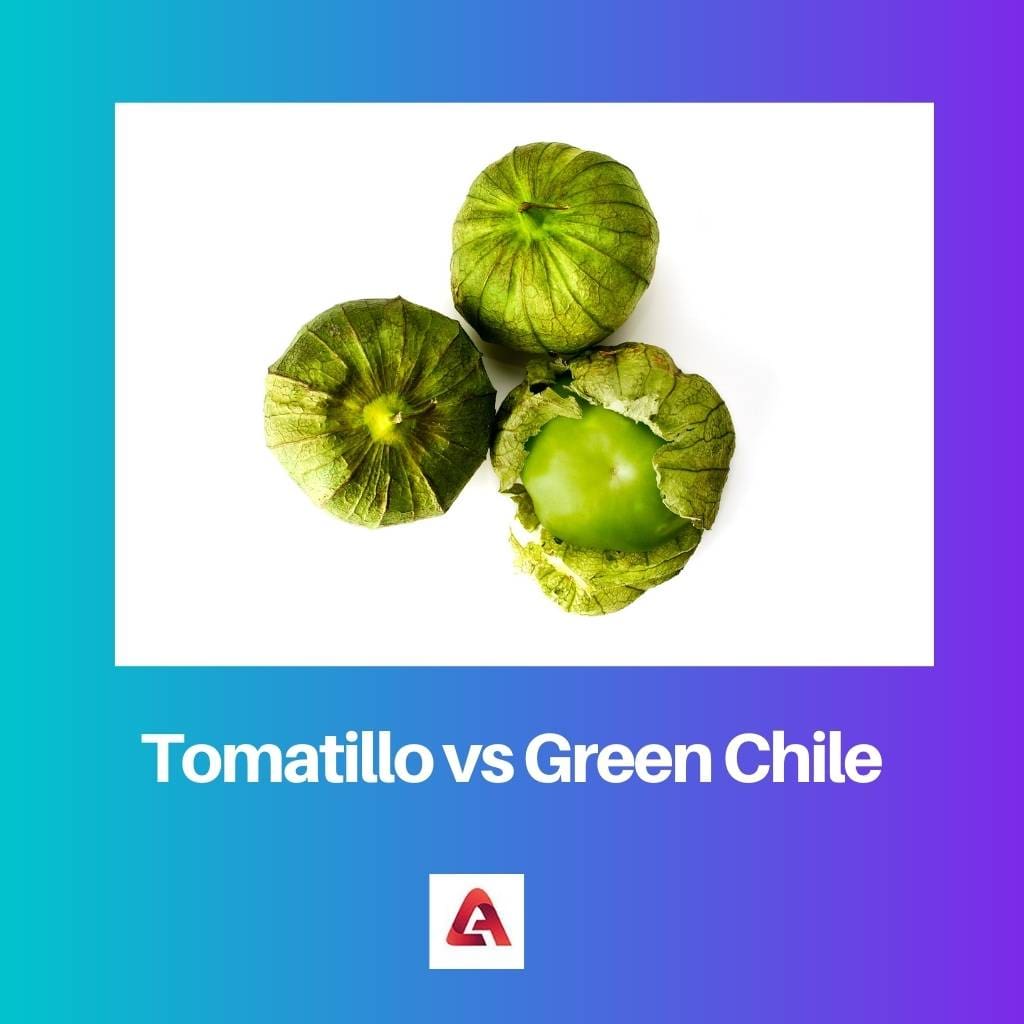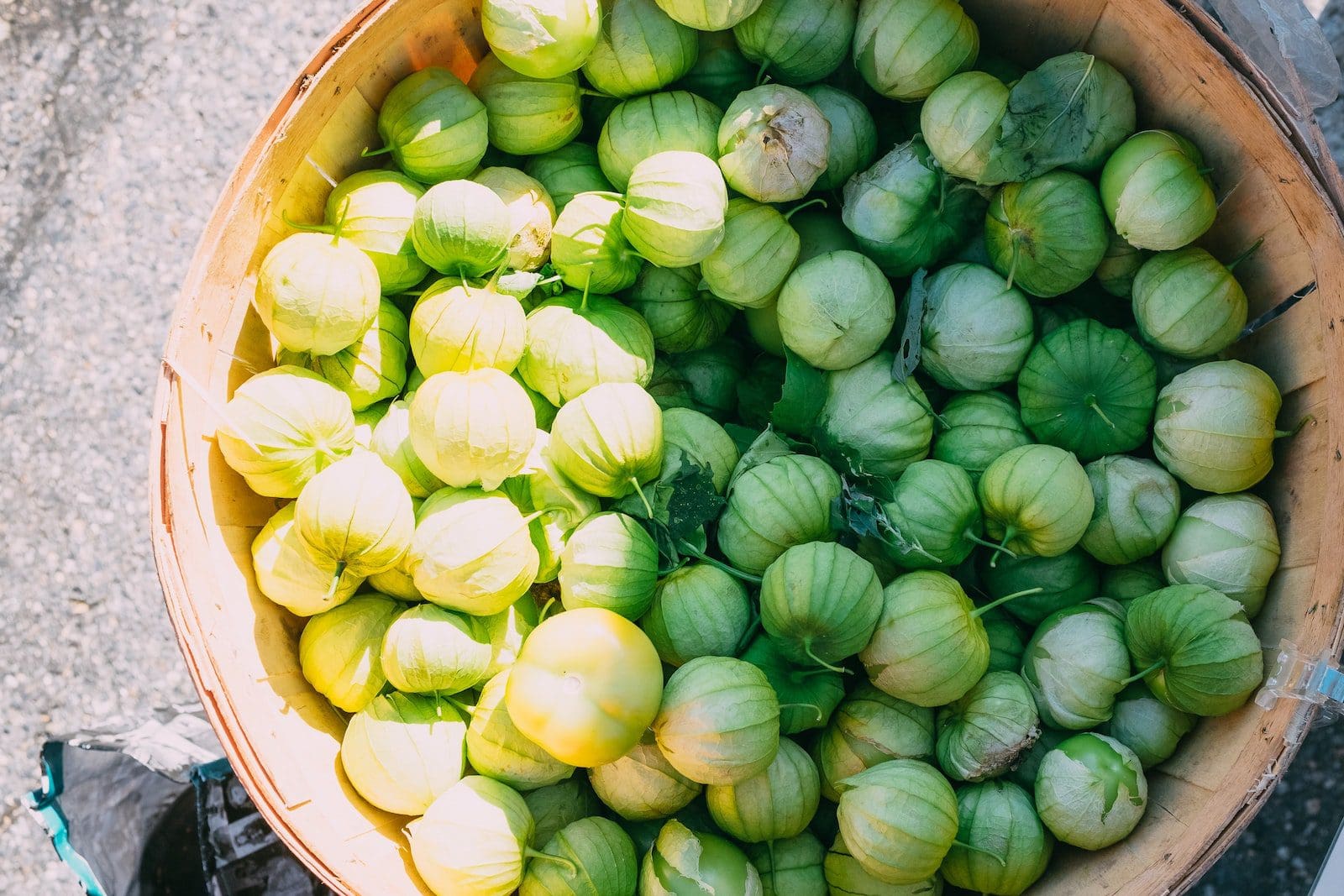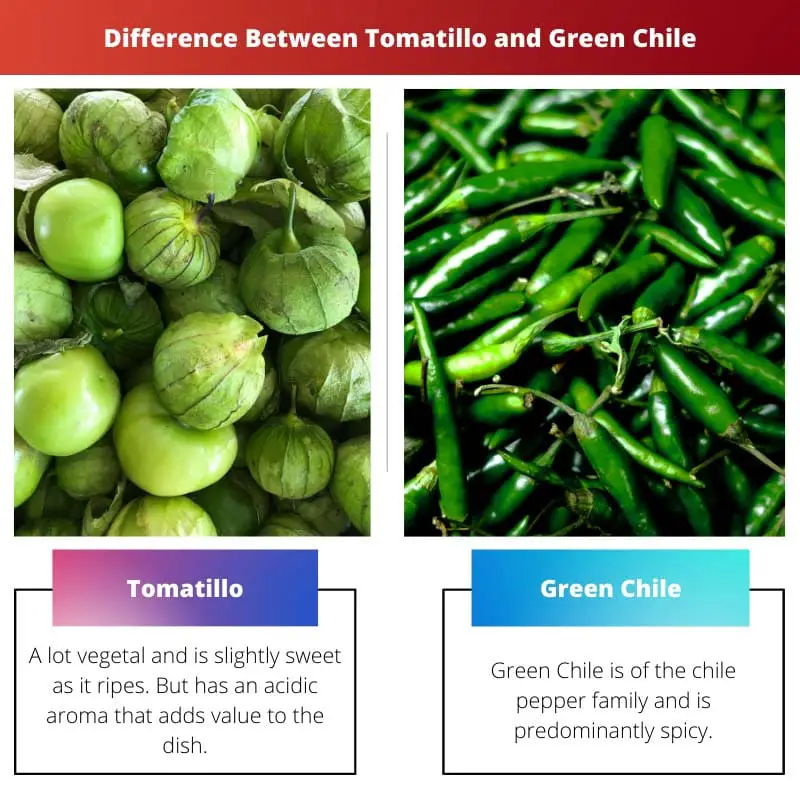Condiments have different uses while cooking. A few are used just before serving the dish, while a few are used during the cooking process.
The condiments’ natural aroma and taste offer a delicious taste to the dish you prepare. These are mostly used to enhance the flavour, but a few ingredients in the condiment family also act as prime taste agents.
Mexican Cuisine has delectable ingredients available in this category. The Tomatillo and Green chile are widely used in many dishes.
They are different from each ranging from their characteristics to their usage too.
Key Takeaways
- Tomatillos are a type of fruit with a papery husk that is removed before cooking.
- Green chillies are a type of pepper that can be used fresh or roasted in cooking.
- Tomatillos are used for their tangy flavor and as a sauce base, while green chillies are used for their heat and flavor in various dishes.
Tomatillo vs Green Chile
Tomatillos are small, green, tomato-like fruits covered in a papery husk with a slightly tart, citrusy flavour and a firm, meaty texture when cooked. Green chiles are varieties of chilli peppers that are harvested when they are still green, having a spicy, smoky flavour and flexible skin.

The Tomatillo is a Mexican fruit that is spherical and small compared to normal tomatoes. It has green and green to purple colour on the surface.
One can eat the fruit raw and can also use it in a variety of dishes to add a sour taste to the food item. An excellent ingredient in various salads too.
Green Chile is a Mexican chile pepper that migrated to Spain in the late 1500. As the name is common, it is a spicy pepper that is added to make the sauce and Salsa verde spicy.
It is a pretty important crop for the nation’s economy. The colour ranges from green to red as it ripes too.
The green chile increases in its spice as it ripens.
Comparison Table
| Parameters of Comparison | Tomatillo | Green Chile |
|---|---|---|
| Taste | A lot vegetal and is slightly sweet as it ripes. But has an acidic aroma that adds value to the dish. | Green Chile is of the chile pepper family and is predominantly spicy. |
| Shape | It is spherical. | It is lengthier and is straight. At times you may find curved ones too. |
| Edible Factor | Tomatillo can be eaten raw. | Green chile cannot be eaten raw. |
| Usage | It is used as an ingredient in few salads and can be eaten as well. | Green Chile is added for enhancing taste and aroma. |
| Health Factor | Tomatillo is rich in Fibre and has several vitamins. | Rich source of Vitamin C that enhances skin growth and keeps it glowing. |
What is Tomatillo?
Tomatillo is from a family of edible fruits. It is similar to tomatoes but smaller in size.
The green, spherical fruit can be eaten raw and act as an excellent ingredient while added to sauce and salads. Tomatillo’s taste aids the acidic flavour of the dish.
The mixture of Tomatillo and Pepper brings out salsa verde and is most common in Mexican dishes. The plant grows in many parts of the world now but a native to Mexico.
The soups and jams made out of tomatillo are highly nutritious.
The fruit is rich in fibre. Also, the presence of Vitamin K and niacin makes it completely healthy.
The crop that bears the Tomatillo thrive well in warm weather conditions, and the plant does not grow well in frost.
Any green sauce in a Mexican dish will certainly have tomatillo added to it. The tart flavour of the fruit makes the dish excellent.
People prefer eating the ripened fruit as it is sweet compared to the green ones.
The best part of the fruit is even the ripened fruit can be refrigerated for more than 2 weeks and still maintains its taste and nutrient. It is also suggested to remove the husk from the outer surface, which can be stored for a longer period.

What is Green Chile?
Green Chile is a chile pepper found mostly in Mexico. A highly needed ingredient in soups and sauces, green chile is mostly spicy.
At the same time, the varieties of Chile have different tastes too. But it retains spiciness, though.
The condiment cannot be eaten as a dish as such. But acts as a perfect seasoning agent for several dishes.
The rich pepper in the green chile adds to the spice of the dish. As the name implies, the chile is green in colour.
It becomes red as it rips. But the taste of the ripened Green chile is spicier than the green one.
You may find green chile, roasted or ground, in many dishes. At times, diced green chile is used to give colour and flavour to the dish.
It is ground well in the sauce, at the same time, diced in fried rice. The vitamin C property that is present in the Green chile gives your skin a glow that you have never experienced.
The crop can improve digestion as well. You can dry the green chile and make chile powder out of it.
This can be used in making several dishes and predominantly added to give spice to the dish. One must add salt appropriately to match the spice to make the dish taste delicious.

Main Differences Between Tomatillo and Green Chile
- The main difference between Tomatillo and Green Chile is the shape. The tomatillo is spherical, while Green Chile is straight or curved.
- Tomatillo can be eaten raw, while Green Chile cannot be eaten raw.
- Tomatillo has a tart taste, whereas Green Chile is spicy.
- Tomatillo is used as the main ingredient in a few salads, but Green Chile is always added to give the right flavour to the dish.
- Tomatillo is rich in fibre, and Green Chile is rich in Vitamin C.

- https://www.sciencedirect.com/science/article/abs/pii/S0308814615300078
- https://onlinelibrary.wiley.com/doi/abs/10.1111/j.1745-4557.1996.tb00442.x

The comparison between tomatillos and green chilies is well-articulated, offering readers a comprehensive guide to understanding the distinct characteristics of these ingredients.
The article provides valuable insights into the culinary attributes of tomatillos and green chilies, emphasizing their flavors, nutritional content, and cultural significance in Mexican cuisine.
The comparison table is a useful addition to clearly illustrate the differences between tomatillos and green chilies. It’s presented in a concise and informative manner.
The article provides a detailed comparison between tomatillos and green chilies, shedding light on their characteristics, usage, and nutritional value.
It’s interesting to learn about the different uses and flavors of tomatillos and green chilies. The article offers valuable information about these ingredients.
The detailed descriptions of tomatillos and green chilies, along with their uses in Mexican cuisine, offer a comprehensive understanding of these ingredients.
The article effectively highlights the significance of tomatillos and green chilies in Mexican cuisine, providing an in-depth analysis of their features and culinary applications.
The detailed explanations about tomatillos and green chilies, including their origins and uses, contribute to a thorough understanding of these essential components in Mexican cooking.
The nutritional information about tomatillos and green chilies is particularly enlightening. This article serves as a valuable resource for understanding these culinary elements.
The article provides insightful details about the taste, shape, and health benefits of tomatillos and green chilies. It’s a well-researched piece.